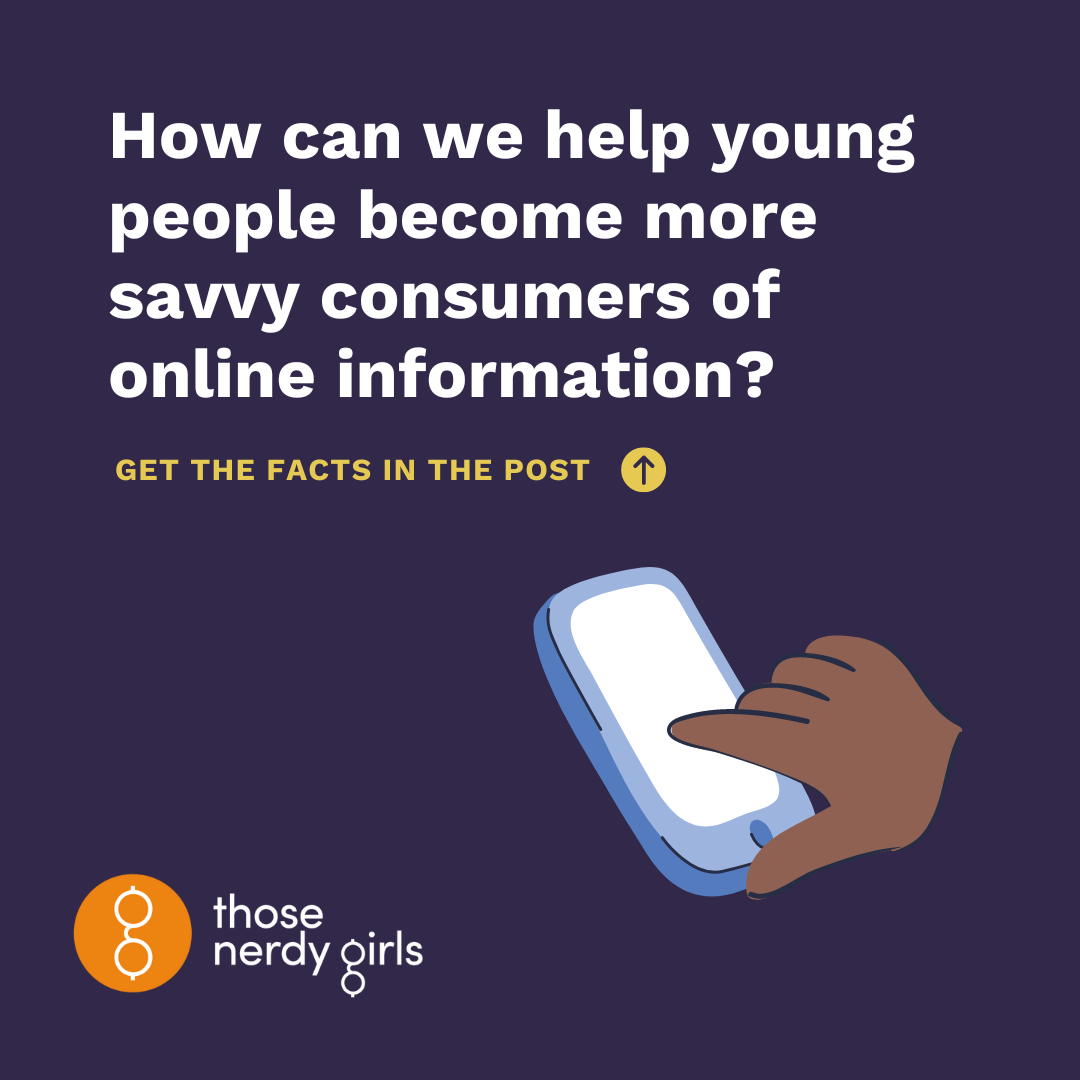How can we help young people become more savvy consumers of online information?

TL;DR The World Health Organization has identified mis/disinformation as a pressing public issue, for adults and children alike. There are steps both educators and parents can take to address this critical issue. The start of a new school year is an excellent time to examine what we can all do.
Misinformation is generally defined as false information being shared by someone regardless of intent, whereas disinformation is false information purposely created and distributed to mislead. Due to their developing brains and critical thinking skills, children can be vulnerable, too. And it’s not just posts written by people driving this disturbing trend; algorithms are also designed to target children and teens on social media.
Consider that:
🔴 A Stanford study of 7,804 students across twelve states showed that 80% of middle and high school students were unable to distinguish between advertisements and real news stories.
🔴 A follow-up Stanford study of 3,446 high school students from a national sample indicated that two-thirds of students “couldn’t tell the difference between news stories and ads (set off by the words ‘Sponsored Content’) on Slate’s homepage,”
🔴 In surveys of 1,005 students aged 13-17 conducted by Common Sense Media, over half (54%) of teens report that they get news from social media sites and half (50%) from YouTube.
🔴 The same survey found that teens are about equally likely to say they are primarily informed about current events by news organizations (31%) as they are by family, friends, or teachers (33%) and by influencers or celebrities they follow online (31%). Algorithms on social media platforms are designed to drive teen viewers to more content.
🔴 According to the Boston Children’s Digital Wellness Lab, an MIT study using a data set of rumor cascades on Twitter from 2006 to 2017 found that on social media, false information has been found to spread further and faster than accurate information.
What are the consequences of children being exposed to mis/disinformation? Internetmatters.org lists the following areas of concern:
⚠️ Reduced trust in the media more broadly, making it easier to dismiss what is actually true
⚠️ Children experience anxiety because they feel they don’t know who to trust and what is real online.
⚠️ Real-life impacts like anti-vax information and the Momo scare that promoted self harm
Technology’s fast pace makes it both challenging and urgent for educators and parents to do whatever they can to help children and students navigate the firehose of information that is ever-present in their lives. Some excellent resources are listed below, but here are a few starter ideas:
🟢 Start early to teach children the difference between fact and fiction. This can even be done when reading fiction and non-fiction books to very young children. You might ask, “What about this story makes you believe it is real?” Or, “What about this story makes you believe it is not real?”
🟢 Encourage children to become “healthy skeptics” by questioning everything. Although this strategy may make parenting and/or teaching more challenging, it will go a long way to helping children develop the important critical thinking skills they need.
🟢 Model responsible media literacy; show children concrete examples of how you are doing that and talk to them about it.
🟢 Teach older children about fact-checking websites like Snopes and how to use them.
🟢 Discuss ads you see online and on TV with your children and ask questions, such as: “What are they trying to get you to do/buy?” “What is it about this ad that makes you want to buy the product?” The act of encouraging them to stop and think about these things is helpful.
Bottom line: Open communication between parents and educators on this issue is crucial.
Parents:
Discuss what is being done in the area of media literacy education with administrators and teachers at your children’s school(s).
Educators:
Share with parents what *they* can do to improve their children’s ability to identify credible information. Don’t hesitate to share resources with each other. The more voices children hear these messages from, the greater the impact.
Older Teens:
Discuss your media literacy strategies and tools with peers and younger siblings.
Those Nerdy Girls wish all students, teachers, and parents a great school year!
Stay safe. Stay well. Stay media smart.
Love,
Those Nerdy Girls
Links:
News Literacy Project Toolkit for Educators and Everyone
Macleans – Big Idea: Teach kids about misinformation
Internetmatters.org – Helping parents keep their children safe online
UNICEF Digital misinformation/disinformation and children
Children and Screens – How to Help Kids (And Adults) Spot Misinformation Online
Amazon ConnectSafely (source of Stanford studies)
Common Sense Media Survey Results
Boston Children’s Digital Wellness Lab (source of MIT study)
This article has been archived for your research. The original version from Those Nerdy Girls can be found here.


